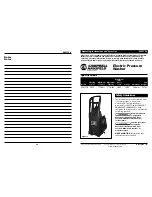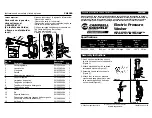
Chlorine and component damage
Notes on using chlorine bleach and perchlorethylene
~
Frequent use of chlorine increases the risk of component
damage.
The use of agents containing chlorine, such as sodium hypochlorite
and chlorine bleach in powder form, can damage the protective
upper surface of stainless steel and cause corrosion to components.
Factors affecting this are chlorine concentration levels, contact time
and temperature. It is therefore advisable to avoid the use of such
agents. Oxygen based bleaching agents should be used instead.
If, however, chlorine based bleaching agents have to be used for
particular types of soiling, then anti-chlorine measures must also be
carried out. If this is not done irreparable damage can occur to
components in the machine and to laundry.
Anti-chlorine treatment
Anti-chlorine treatment has to be carried out immediately after
chlorine bleach has been used. The use of hydrogen peroxide or an
oxygen based cleaning or bleaching agent is recommended and
the laundry should not be drained in between.
With thiosulfate, especially when used with hard water, gypsum can
form, which can lead to incrustations on laundry or deposits in the
machine. The use of hydrogen peroxide is preferable as it aids the
chorline neutralising process.
The exact quantity of additives and the treatment temperatures
required must be set and tested on site in accordance with the
dosage recommendations of the detergent and additive
manufacturers. The laundry must also be tested to check whether it
contains any active chlorine residues.
Warning and Safety instructions
12
Summary of Contents for PW 5082
Page 58: ...58 ...
Page 68: ...Alteration rights reserved 1313 M Nr 09 146 142 00 ...













































